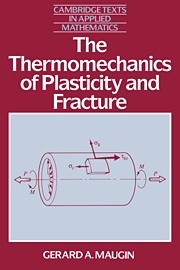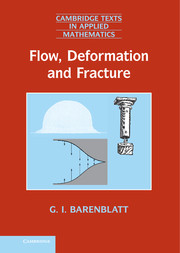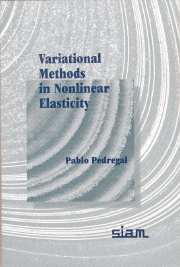The Thermomechanics of Plasticity and Fracture
This book concentrates upon the mathematical theory of plasticity and fracture as opposed to the physical theory of these fields, and is presented in the thermomechanical framework. It follows the macroscopic, phenomenological approach which proposes equations abstracted from generally accepted experimental facts, studies the adequacy of the consequences drawn from these equations to those facts and then provides useful tools for designers and engineers. The material is drawn from the author's graduate course in Europe and the United States and may be used to form the basis for similar graduate courses on plasticity and fracture. Many worked examples are presented and each chapter concludes with problems for students. The book will thus undoubtedly establish itself as a core text for both students and researchers.
- Includes many worked examples
- Material drawn from author's graduate course
Product details
May 1992Paperback
9780521397803
372 pages
230 × 152 × 24 mm
0.549kg
85 b/w illus.
Available
Table of Contents
- Preface
- Historical perspective
- Notation
- 1. Introduction to plasticity: experimental facts
- 2. Thermomechanics of elastoviscoplastic continua
- 3. Small-strain elastoplasticity
- 4. Problems in perfect elastoplasticity
- 5. Elastoplasticity with strain-hardening
- 6. Elements of limit analysis
- 7. Crack propagation and fracture mechanics
- 8. Elastoplasticity with finite strains
- 9. Homogenization of elastoplastic composites
- 10. Coupling between plasticity and damage
- 11. Numerical solution of plasticity problems
- 12. Experimental study using infrared thermography
- Appendices
- Further reading
- Bibliography
- Index.








